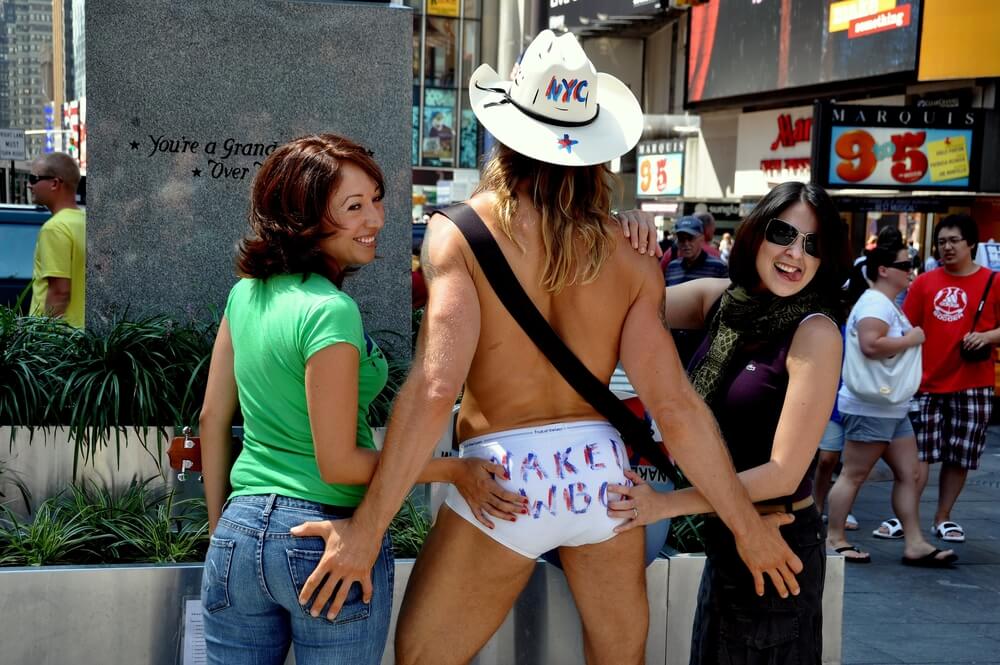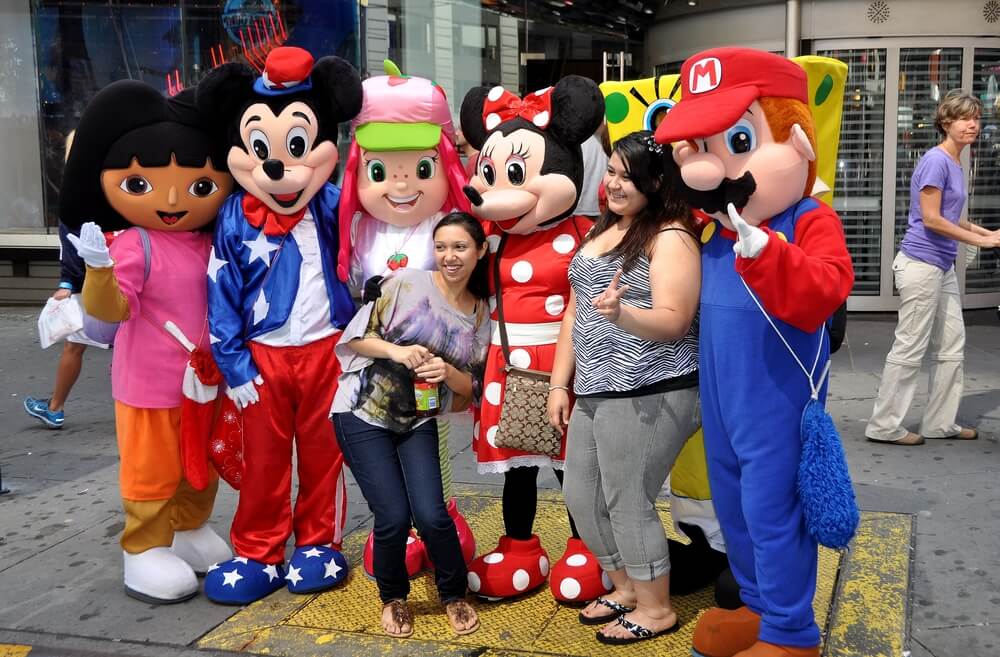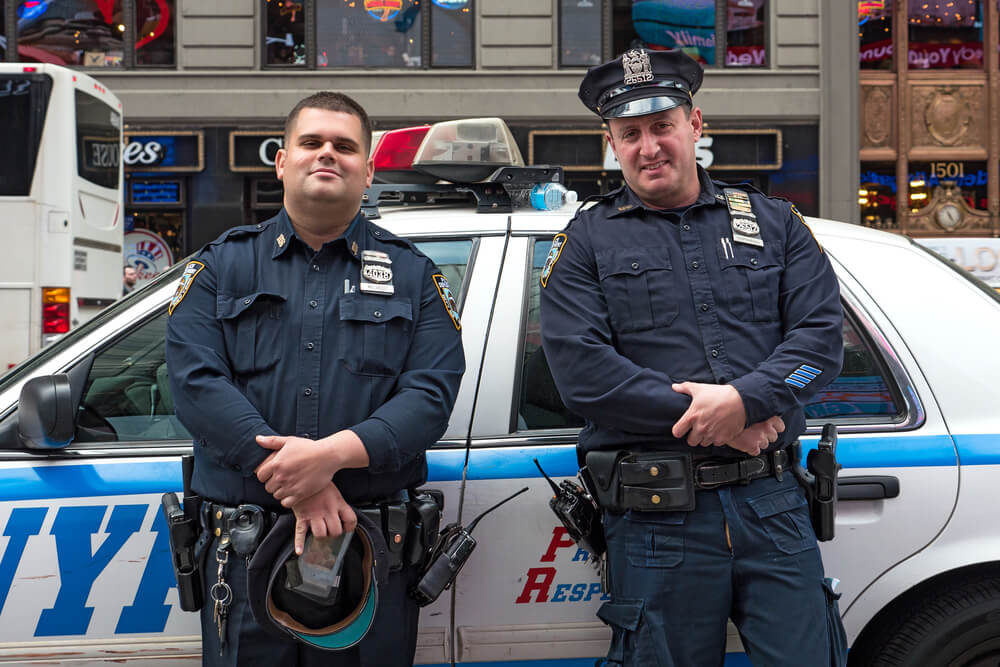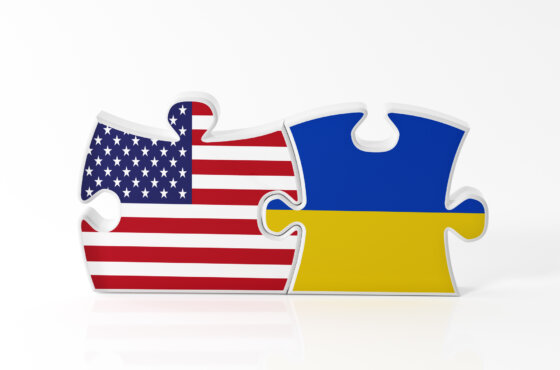The Price of Hugs: How Times Square Street Artists Earn
They shock and surprise, cause a state of childish euphoria and irritate with obsession. Times Square street performers are as much a hallmark of New York as the Statue of Liberty or the Wall Street Bull. Forum Daily looked into the lives of Times Square characters.

Naked Kobvoy in Times Square. photo: depositphotos.com
The slogan “Everything is for sale” is, perhaps, about him, Robert Burke. Advertising contracts determine not only his schedule, appearance, but even the model of underwear he wears every day.
Robert Burke, better known as the Naked Cowboy, is one of Times Square's most iconic characters. After receiving a bachelor's degree in political science from the University of Cincinnati (Ohio), he moved to Los Angeles in 1997. There Burke began singing with a guitar on the beaches. The earnings, however, were small, but only until the Playgirl magazine photographer, who took erotic photographs of Burke for the publication, advised him to undress - not only in the studio, but also on the beach. On the first day, Burke earned $110.
Conquer New York Naked cowboy arrived in 2001 year. By this time he was already a successful businessman: Burke had registered his own trademark and started promoting it. So soon after the move, his earnings exceeded $ 300 per hour.
Now on the official website of the Naked Cowboy сообщается, that he charges $500 per hour for conducting a wedding ceremony, and $1000 per hour for a corporate event in New York. Robert Burke's performance in the United States costs $5 thousand per day, and outside the country - twice as much. In both cases, a business class flight and a double room are a must.
The Naked Cowboy also makes money by using its own brand in advertising. His clients include Citi Bank, Pepsi, Chevrolet, Nike and MTV.
In 2010, Robert Burke signed a major contract with Blue Island Shellfish Farms. Now the oysters that the company sells around the world are officially are called “Naked Cowboy Oysters”.
Until recently, Burke performed in ordinary short shorts. However, after signing a contract with the manufacturer of underwear Fruit of the Loom, he had to change them for boxers.
Robert Burke is now 45 years old. In 2009, he tried to compete for the post of mayor of New York, and in 2012 - for the post of President of the United States. However, the Naked Cowboy is much better at doing business than conducting political activities. In this he did not advance far: in both cases he had to withdraw his candidacy in the early stages of the election race.
However, the life of most street artists of Times Square looks very different. Among them are many Hispanics who can hardly speak English. And when, at the end of a hot New York day, street performers remove the plush heads of Mickey Mouse, it becomes clear that tourists are entertained by tired middle-aged women. When I try to talk to one of them, she only confuses nods and is silent. A moment later, a man appears behind my back, who exchanges a few words with the street artist, and then answers on behalf of the woman: “She does not give an interview. Do not you see, it works? Want a photo - pay. We don’t do charity here. ”
“People portraying cartoon characters are a separate category of Times Square abodes. They are not professional actors or musicians. Among them there are indeed many immigrants from the poorest backgrounds, some of whom have criminal records in the past. These people work together and can often be too aggressive, especially towards tourists: they literally force them to take a photo together. We try to stay away from them,” says Teresa, who is handing out promotional brochures nearby.

Animators in Times Square. photo: depositphotos.com
Francisco Cardenas lives on the other side of the Hudson River in the neighboring state of New Jersey. Every morning he, like thousands of other people, takes the train to Manhattan and gets off at Penn Station. Arriving in Times Square, Cardenas puts on the costume of Sheriff Woody from the cartoon “Toy Story.”
“My son is three years old. I need to pay rent and food for my family,” he says.
Before Francisco Cárdenas found himself in Times Square, he was an auxiliary worker.
“We have no salary. Tips are our only income. However, you know, I can earn the amount that I received at my previous job much faster here,” says Cardenas.
Like any other business, working in Times Square requires an initial investment. Before you start being photographed with tourists, the characters spend about $ 300 on a costume. At the end of the investment. Everyone works for himself. Times Square characters have neither an official employer nor a trade union.
The cartoon characters of New York's most tourist square, like office clerks, work about 40 hours a week. Their income varies from $10 to $300 per day. The girls who take topless pictures with tourists earn the most. The average income of cartoon characters is $60 per day. As a rule, tourists leave no more than a couple of dollars for one photo.
Cardenas colleague Giovanna Melendez works plush Minnie Mouse in Times Square. She also lives in New Jersey for reasons of economy: she has four children.
“I like to portray a cartoon character. I like Times Square, I like my suit. But lately it has become more difficult to work. People complain about us more often, and the police issue us fines all the time. Last year I personally had to pay for them twice. It’s not fair,” says Giovanna.
A month ago, in July 2016, the power of street performers over Times Square have limited. Now they are all required to be within a specially designated area - along with excursion ticket sellers, dancers and the Naked Cowboy. The specially designated area is a rectangle in the center of the street. Its boundaries are marked on the asphalt with green paint. There is a pedestrian zone around. Enforcement of the new law is closely monitored by a squad of armed police stationed right here on the corner of 42nd Street and Broadway.
The characters of Times Square can be dangerous for visitors to the square, the city authorities decided. A few weeks earlier, one of the plush characters hit an 24-year-old girl in the face who refused to take a photo hugging him. And before that, a man in a Spiderman suit was twice arrested: first for insulting a police officer, and then because of a conflict with a tourist because of the size of the tip.
Rule change active lobbied for Members of an organization called the Times Square Alliance are an association of businesses that have retail outlets or offices in this square. Now it is possible that local authorities will introduce new restrictions for street performers. In May, New York lawmakers returned to consider the document, first proposed two years ago. The bill obliges street performers to obtain a license to operate in the square.
In the meantime, no special permission is required to work in Times Square. Standing behind the green line, several dozen street performers still wave to tourists. However, from time to time someone breaks the new rule. Two Spidermen and one Minnie Mouse hug tourists from the side of Broadway - literally a few meters from the official border of Times Square. The police are not touching them yet: children and teenagers laugh while taking pictures, and local residents have not yet complained about violation of personal space or cases of unwanted tactile contact.

Police in Times Square oversees the work of street performers. photo: depositphotos.com
300 thousand pedestrians pass through Times Square every day. “Too slow,” complain New Yorkers, accustomed to walking at the speed of a slow run, and avoid this area. Over the years, the square was both a habitat for the cultural elite and a criminal area. Nowadays, Times Square houses theater buildings and numerous offices of large financial corporations and media holdings. Giant advertising billboards illuminate the square around the clock. Here they sell plastic statues of liberty made in China, magnets with the image of the Big Apple and organize protests at the famous red steps. But, perhaps, despite any laws, until now not a single photograph taken at this crossroads of the world is complete without plush Mickey Mouse or Spiderman, accidentally or intentionally included in the frame.
Go to the page ForumDaily on Facebook to keep abreast of the latest news and comment material. Also follow the social network for events in your city - Miami, New York и San Francisco Bay Area.
Subscribe to ForumDaily on Google News










